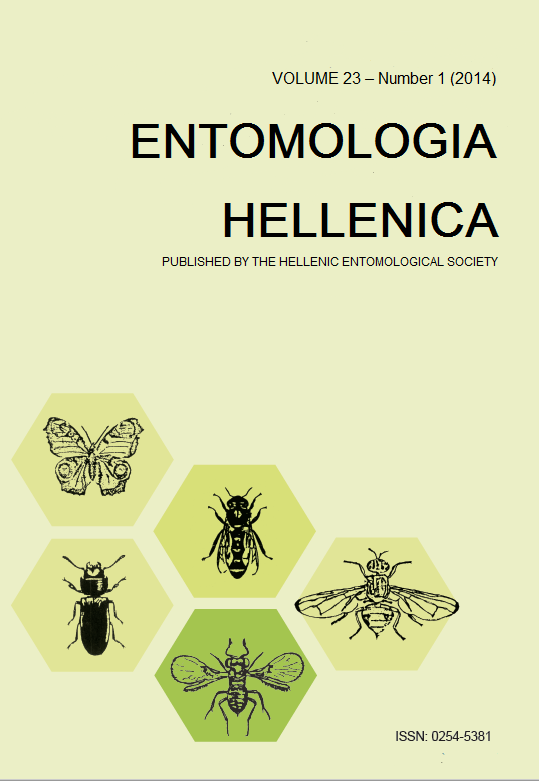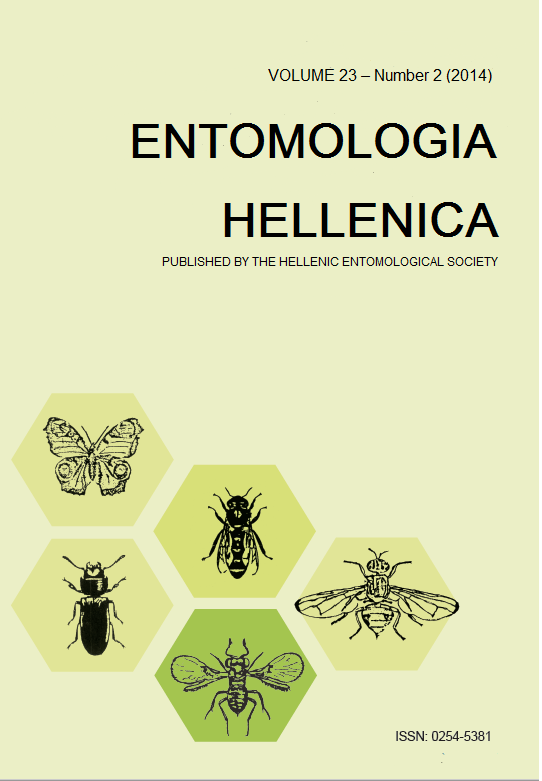Βιοποικιλότητα εδαφόβιων αρθροπόδων σε αγροοικοσυστήματα πεδινών και λοφωδών ελαιώνων στην Κρήτη
Περίληψη
Μελετήθηκε η βιοποικιλότητα της εδαφόβιας πανίδας αρθροπόδων σε 24 ελαιώνες, οι οποίοι βρίσκονται σε οκτώ διαφορετικές τοποθεσίες στην περιοχή της Μεσσαράς, Κρήτη, και καλύπτουν τις κύριες αγροοικολογικές ζώνες της ελαιοπαραγωγής, πεδινή και λοφώδη. Οι μετρήσεις της εδαφόβιας πανίδας περιλάμβαναν πέντε εβδομαδιαίες δειγματοληψίες σε κάθε εποχή του έτους, με χρήση παγίδων παρεμβολής εδάφους (pitfall traps). Επίσης, ορίστηκαν ομάδες λειτουργικής πανίδας, που αφορούν την βιολογική καταπολέμηση των εχθρών της ελιάς και την ανακύκλωση των θρεπτικών συστατικών του αγροοικοσυστήματος των ελαιώνων. Έγινε σύγκριση μεταξύ των διαφορετικών αγροοικολογικών ζωνών, όσον αφορά την αφθονία και την ποικιλότητα των εδαφόβιων αρθροπόδων και των λειτουργικών τους ομάδων. Στις ταξινομικές ομάδες με μεγάλη αφθονία απαντώνται τα Coleoptera (39.52%), η οικογένεια Formicidae (27.3%), τα Araneae (8.77%) και τα Collembola (5.32%). Η λοφώδης αγροοικολογική ζώνη παρουσίασε υψηλότερη ολική ποικιλότητα αρθροπόδων, ωστόσο χαμηλότερη αφθονία, λόγω της παρουσίας της οικογένειας Tenebrionidae. Ο πλούτος των ταξινομικών ομάδων δεν διέφερε μεταξύ των αγροοικολογικών ζωνών. Η ολική λειτουργική πανίδα αντιπροσώπευσε ένα μεγάλο ποσοστό της ολικής βιοποικιλότητας (76.7%) ενώ παρουσίασε μια τάση υψηλότερης σχετικής αφθονίας στους λοφώδεις ελαιώνες, με εποχικές στατιστικά σημαντικές διαφορές. Ο δείκτης βιοποικιλότητας Shannon υπέδειξε υψηλότερη βιοποικιλότητα στους λοφώδεις ελαιώνες, με στατιστικά σημαντικές διαφορές την άνοιξη. Γενικά, η λιγότερο εντατική ελαιοπαραγωγή των λοφωδών ελαιώνων φάνηκε να ευνοεί την βιοποικιλότητα της εδαφόβιας πανίδας αρθροπόδων.
Λεπτομέρειες άρθρου
- Πώς να δημιουργήσετε Αναφορές
-
Gkisakis, V. D., Kollaros, D., & Kabourakis, E. M. (2014). Βιοποικιλότητα εδαφόβιων αρθροπόδων σε αγροοικοσυστήματα πεδινών και λοφωδών ελαιώνων στην Κρήτη. ENTOMOLOGIA HELLENICA, 23(1), 18–28. https://doi.org/10.12681/eh.11531
- Τεύχος
- Τόμ. 23 Αρ. 1 (2014)
- Ενότητα
- Articles

Αυτή η εργασία είναι αδειοδοτημένη υπό το CC Αναφορά Δημιουργού – Μη Εμπορική Χρήση – Παρόμοια Διανομή 4.0.
Authors who publish with this journal agree to the following terms:
Authors retain copyright and grant the journal right of first publication with the work simultaneously licensed under a Creative Commons 4.0 license.
Authors are able to enter into separate, additional contractual arrangements for the non-exclusive distribution of the journal's published version of the work (e.g. post it to an institutional repository or publish it in a book), with an acknowledgement of its initial publication in this journal. Authors are permitted and encouraged to post their work online (preferably in institutional repositories or on their website) prior to and during the submission process, as it can lead to productive exchanges, as well as earlier and greater citation of published work.





